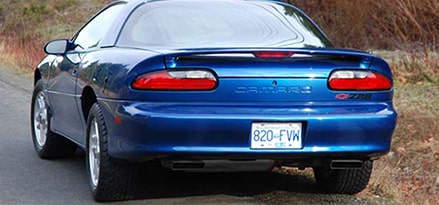Think about it for a bit: You're cruising down the highway at a leisurely rate. Traffic is "normal" for a workday, but you're okay with it. Out of the blue, the car starts acting up: It's stalling; it's bucking and jerking, as if it's out of gas. Before you know it, the steering becomes increasingly difficult (no engine power means no power steering) and you're getting an eye-full of the Check Engine light on the dash. It's almost like sensory overload. Now what?
What to do when your car quits while driving on the highwayIt's unquestionably a nerve-wracking experience. And in some cases, it's also downright frightening. But what do you do? The very first thing you should do, as soon as you have any indication of a potential stall or other vehicle trouble, is to get over to the side of the highway. It's far better (obviously) to pull over to the right if you can, simply because it allows you an easier out (since you're not stuck between opposing lanes of traffic).
-

When pulling over, signal normally. Of course, every situation will differ, but when you're at the roadside, try to pull as far off the shoulder as you can. Immediately turn on the vehicle's hazard warning lights. They're the universal sign of distress.
If you're unable to pull completely over onto the shoulder, or if the car is stalled in a traffic lane, do not attempt to get out of the car! Similarly, never try to cross a highway on foot. The odds of getting run over by a driver who doesn't see you are great. Once your vehicle has come to a complete stop and the hazard lights are on, wait for help. Watch the rear view mirror for approaching traffic.
If you absolutely must exit and the right side is (for example) clear to the shoulder, then you can consider exiting through the passenger side door. The same applies to situations where there is no shoulder, such as a bridge. When it comes to cars stalled on a bridge, it's best to set the park brake, exit the car from the passenger side, call for help and stand several hundred feet ahead of the car on the bridge walkway (catwalk). Wait for help to arrive.
-

Once you pull over on a highway, call for help (cell phone or highway emergency call box). Then, if you exited the car, return to it, get in, put your seat belt/shoulder harness on, lock the doors and wait for assistance.
If you have a pet in the car, under no circumstances should you allow the animal out of the vehicle. If possible (if the car is on level ground), leave the car in Neutral instead of Park and do not set the park brake. Why? Simple. If you do get rear-ended, the resulting impact will be reduced. If another motorist stops and approaches the car, roll down your window slightly and ask for assistance.
-

Some folks will tell you to raise the hood when in distress. The practice might work, but the open hood blocks your field of vision. The same applies to the lid of the trunk.
If your car isn't completely disabled, keep moving (on the shoulder). If the car has a flat tire, don't stop on the highway. Keep driving slowly on the shoulder until you come to a safe place to stop. In this case, keep in mind that you'll probably damage the wheel, but it's cheap in comparison to the dangers associated with stopping cold on the highway.
Even if you're mechanically inclined, do not attempt to fix the car until it is off the road. Working under the hood of a car, under a car or alongside a car is incredibly dangerous next to moving traffic, even with all sorts of emergency warning devices deployed.
-

If you have flares or safety triangles or lights, set them up only when safe to do so. Be very cautious when lighting a flare. Not only can they burn considerable holes in your clothing but they can also ignite anything flammable on the roadside, including weeds, dry brush or debris.
Finally, keep important telephone numbers in the car, such as roadside assistance numbers, AAA, and numbers for friends and relatives. Once you reach help, be prepared to provide them with your exact location. Mile markers are the accepted norm.
Build your own car emergency kit with these helpful instructions.

